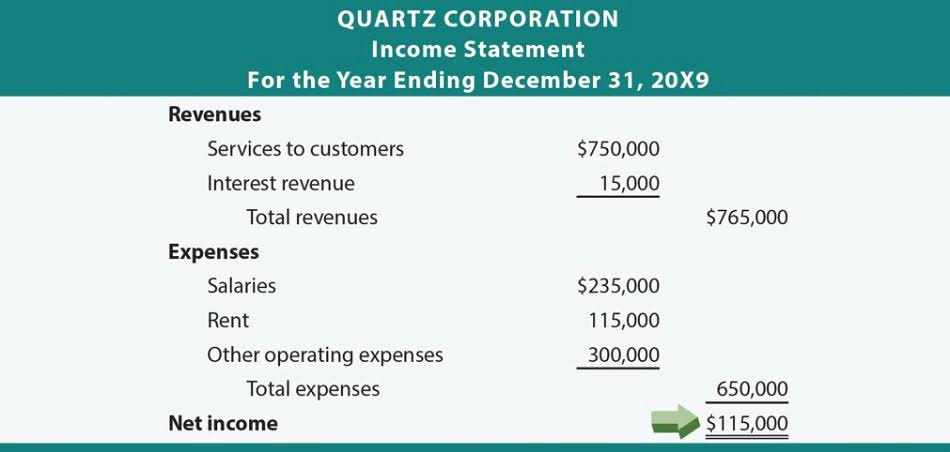
This ratio tells you if you can meet short-term liabilities without selling inventory, a sterner test of liquidity. Each type plays a pivotal role in financial decision-making, influencing how assets are managed, valued, and converted into cash. This example underscores the importance of liquidity for small businesses, highlighting the need for accessible cash or cash equivalents to manage unexpected challenges and maintain smooth operations. This café, like any small business, needs https://www.bookstime.com/ to maintain sufficient liquidity to cover its day-to-day operations—paying employees, purchasing ingredients, and covering rent and utility costs. Explore what liquidity means in finance, learn about its types, and understand how to measure it with key ratios for effective financial management. Market liquidity refers to the extent to which a market, such as a country’s stock market or a city’s real estate market, allows assets to be bought and sold at stable, transparent prices.
Prepaid expenses are first recorded as current assets on the balance sheet. Then, when the benefits of these assets are realized over time, the amount is then recorded as an expense. This is the most liquid form of current asset, which includes cash on hand, as well as checking or savings accounts. The average amount of liquidity provided through holdings of outright portfolios decreased by €89.3 billion over the review period.
How Do Investors Use Current Assets?
Order of liquidity is a presentation method showing accounts in the order of time needed to be converted into cash starting with the most liquid accounts. It’s a helpful method for investors to understand the financial situation of a company and their ability to settle their liabilities. Using the order of liquidity to present the current assets has many benefits, not only for the readers of financial statements but for management of the company as well.
Assets are prioritized by their liquidity, whereas liabilities are prioritized by their permanency. If demand shifts unexpectedly—which is more common in some industries than others—inventory can become backlogged. Read through the company reports or browse the internet to determine what is going on with a company’s inventory—it might also just be standard practice or a trend in the industry order of liquidity for inventory to be at specific levels. If an account is never collected, it is entered as a bad debt expense and not included in the Current Assets account. In practice, the most widely used title
is Balance Sheet; however Statement of Financial Position is also acceptable. Naturally, when the presentation includes more than one time period the title
“Balance Sheets” should be used.
Marketable securities
For example, if Company B has $800,000 in quick assets and current liabilities of $600,000, its quick ratio would be 1.33. Similar to the example shown above, if the cash ratio is 1 or more, the company can easily meet its current liabilities at any time. Positive working capital shows that the company has enough current assets to pay off its current liabilities. Current assets include, but are not limited to, cash, cash equivalents, accounts receivable, and inventory. Repo lines are available under uniform conditions as part of the EUREP framework. These conditions include the risk control framework and pricing, which may be adjusted by the Governing Council in accordance with monetary policy considerations.
- The key components of current assets are cash and cash equivalents, marketable securities, accounts receivable, inventory, prepaid expenses, and other liquid assets.
- The quick ratio
expresses the degree to which a company’s current liabilities are covered by
the most liquid current assets. - The ease of the transaction, the immediate exchange of value—this is liquidity in action, albeit on a small scale.
- Unlike the cash ratio and quick ratio, it does not exclude any component of the current assets.
Of course some customer debts are not eventually paid – the customer becomes insolvent, leaving the business with debtor balances that it cannot recover. Inventories (often also called “stocks”) are the least liquid kind of current asset. Inventories include holdings of raw materials, components, finished products ready to sell and also the cost of “work-in-progress” as it passes through the production process. Current assets are listed in order of their liquidity – or in other words, how easy it is to turn each category of current asset into cash. Another key limitation is the fact that a balance sheet reflects balances at only one given point in time.
The Accounting Equation and the Classified Balance Sheet
When the current ratio is less than 1, the company has more liabilities than assets. Should all of its current liabilities suddenly become due, the value of its current assets would not be enough to cover the needed payments. The cash ratio is a more conservative and rigorous test of a company’s liquidity since it does not include other current assets. Average excess liquidity decreased by €96 billion, to reach €3,528.5 billion (Chart A) over the review period. Excess liquidity is the sum of the reserves that banks hold in excess of their reserve requirements and their recourse to the deposit facility net of their recourse to the marginal lending facility.

